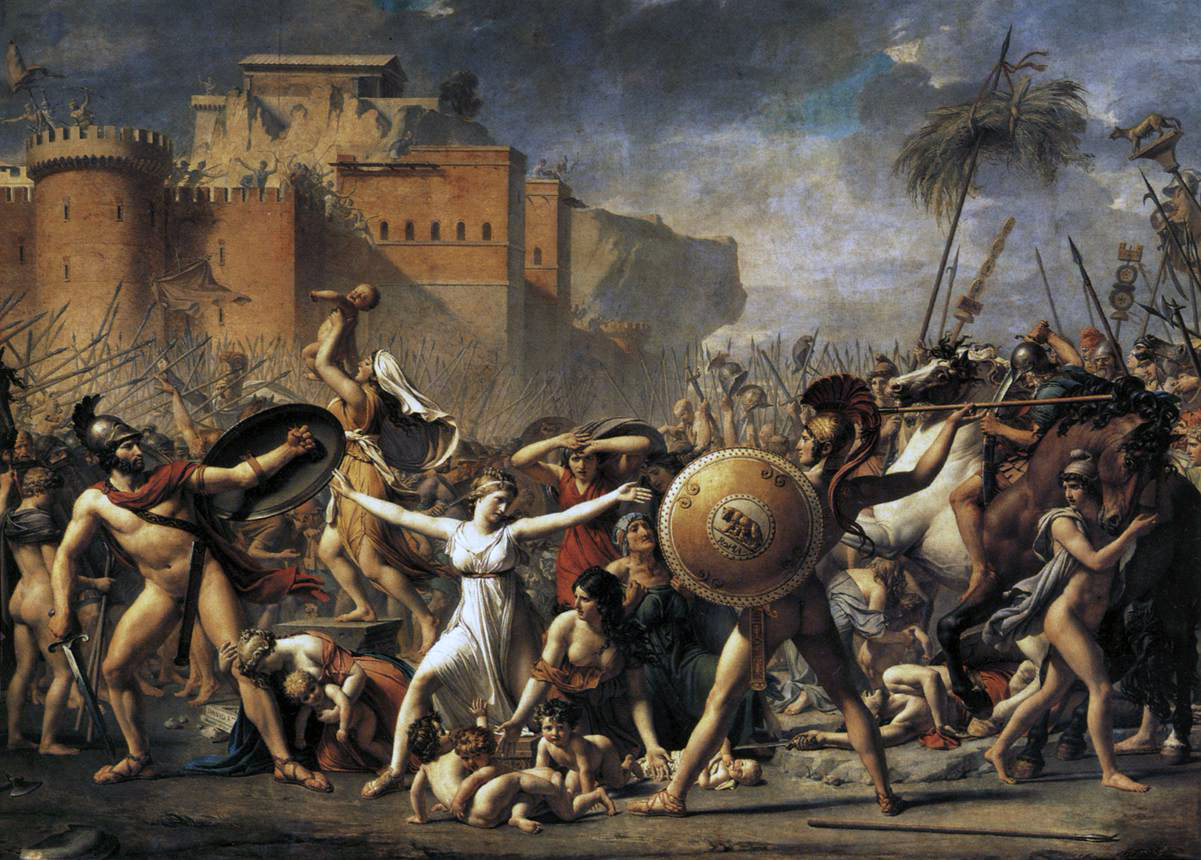
Oath of Horatii, Jacques Louis David
This Neoclassical painting by Jacques Louis David depicts three Horatii brothers swearing an oath to protect Rome to their father. Saluting him, the three men will soon fight three Curatii brothers to settle a dispute in order to avoid a full-blown war. The women behind the father grieve because one of the Alban women is engaged to a Roman man, but is also a sister to a Curatti, so the two sides must fight against each other, though they are still linked by marriage. She mourns because no matter what results from the fight, she will lose someone she loves. The posture and poses of the men contrasts with those of the women in order to emphasize the dedication and willingness to sacrifice for their homeland, and renders the women useless in their grief.
The background of the painting is too dark relative to the light shining on the forefront of the scene, David did this to portray the virtue of the act being performed. The vanishing point of the structure is covered by the father’s hand wrapped around the sword. This draws the viewers eye almost to the center to give an even view of all the happenings in the scene.According to Julius Held, professor at Barnard College and Columbia University, and Donald Posner, professor at the Institute of Fine Arts and New York University in their collection and commentary on 17th and 18th Century Art, this new assymetrical arrangement was influence by Baroque art and was shortly thereafter departed from in more Neoclassical art.
The emphasized masculinity serves to evoke a sense of patriotism in the viewer. The virtue of the act served as a catalyst for rallied support from the French who shared classical views, and even though it was created about four years before the revolution, it became a symbol for the time period and the movement.

Reconciliation of the Sabine Women, David
David’s painting, Reconciliation of the Sabine Women, depicts a gruesome, confusing, and inspiring story. Years before the scene takes place, Ancient Romans had taken Sabine women captive and forced them into marriage. The Sabine me come to take back the women, however the women throw themselves in between the fighting because after years of adjusting, they now how families and cherished ones on both sides of the fight. David mostly created this piece for his wife who has very strong opinions about love versus war. Ultimately, the painting served as a political commentary on the Revolution in France and the desparate need for peace. No one gains anything in this scene, which was David’s idea of the present conflict; it was a lose-lose situation.
The Reconsiliation was painted in total opposition of the Oath of Horatii. The first image glorifies fighting as a solution to conflict, while the latter expresses it’s total destruction and complete lack of benefit. Rococo art met its end with David’s work. (17 and 18th Century Art)
Bibliography:
Held, Julius S., and Donald Posner. “France in the 18th Century.” 17th and 18th Century Art; Baroque Painting, Sculpture, Architecture. New York: H. N. Abrams, 1971. N. pag. Print.
Help Received: Google Docs; Google images; https://en.wikipedia.org/wiki/Oath_of_the_Horatii
Sarah E. Lemon

